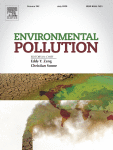|
Autors/es |
Abstract Microplastics represent a growing environmental concern in the aquatic environment due to its size resemblance to microplankton in addition to its ability to act as concentrators of persistent organic pollutants (POPs). Among them, polybrominated diphenyl ethers (PBDEs) stand out as POPs with dangerous levels in the aquatic environment. In this paper we have developed a methodology for studying the sorption and extraction process of twelve congeners of PBDE from four microplastics: polyethylene terephthalate (PET), polypropylene (PP), low density polyethylene (LDPE) and polystyrene (PS). We have proved that there is a dependence between the polymer composition and the solvent used for the extraction of the analytes. The extraction is function of the ability of the solvent to partially or totally dissolve the plastic that will allow the analyte to have a greater capacity to be released from the polymer structure. The solution of the polymer is achieved by making the free energy (ΔG, or Gibbs potential) of the system negative making the process occurs spontaneously, this will depend on the solubility parameter (∂), specific of both, solvent and polymer. Therefore, this study helps to determine which methodology to be applied for the extraction of pollutants before the start of the analysis. This approach has been applied to microplastic samples collected in different locations in the four oceans and collected from the Barcelona World Race (BWR) 2014–2015 sailing race. |
Altmetrics
|
|
Publicació Environmental Pollution, July 2020, v.262, 114377 |
||
|
Data de publicació 2020-07-01 |
||
|
DOI |



